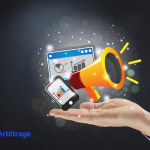This article is a practical guide to using the famous phrase “new and improved” in copy to drive conversions. It would be helpful for content writers, marketers, and strategists who want to use this effective technique to drive conversions.
Table of Contents
Introduction
My 19-year-old niece is driving her mother crazy because she wants a “new model” of her phone. Her mother is at her wits’ end trying to explain it’s just a marketing gimmick, but my niece is adamant.
Her mother is not wrong, by the way, it is a marketing strategy and a crazy good one because it works on everyone!
You’re scrolling through your phone when you see an ad for the “2025 ka naya model” of your favorite smartphone. Your thumb pauses mid-scroll. That “naya” (new) caught your attention, didn’t it?
From app updates promising smoother experiences to car dealerships flaunting their latest models, Indian consumers have an undeniable appetite for anything that’s fresh, upgraded, or reimagined.
Yet here’s what I keep hearing from fellow writers: “Bro, ‘new & improved’ is so 2010. It’s overdone. Consumers are tired of it.” But here’s the thing – they’re not.
Data from Google Ads in 2024 shows that novelty-driven campaigns still get better engagement compared to campaigns without novelty triggers.
The problem isn’t that “new & improved” doesn’t work. The problem is that most writers are using it wrong. They’re being generic, vague, and frankly, boring about it. But when you understand the psychology behind why humans crave novelty, you can craft copy that not only captures attention but drives real conversions.
In this piece, I’ll walk you through the science of novelty bias, show why it’s particularly powerful in the Indian market, and provide a proven framework to write “new & improved” copy that actually converts.
Why the tag of “new” drives conversions: exploring “novelty bias”
Novelty bias is simply your brain’s built-in preference for new experiences, information, or stimuli over familiar ones. It’s not just marketing fluff; it’s hardwired into how we think and make decisions.
How your brain reacts to new things
Here’s what happens in your brain when you encounter something new: Your neurons fire up, releasing dopamine – the same chemical that makes you feel good when you eat chocolate or get likes on Instagram. The dopamine hit creates curiosity, excitement, and most importantly for us marketers, attention.
How newness drives action
Here’s where it gets interesting for copywriters: Novelty doesn’t just make people pay attention. It makes them act.
When we perceive something as new or improved, we unconsciously assign it a higher value. It’s why a “2.0” version of an app feels more valuable than the original, even if the changes are minor. It’s why “new recipe” on a food package makes us think it tastes better.
The marketing implications are huge. “New” triggers exploration behavior – the psychological drive to investigate, try, and potentially adopt something different. It builds anticipation (will this be better than what I’m currently using?) and creates urgency (I should try this before everyone else does).
This isn’t just theory. Brands that consistently leverage novelty in their messaging see measurable results. When you understand that every “new,” “updated,” or “reimagined” in your copy is essentially a small dopamine trigger for your reader, you start to see why this approach remains so powerful.
Why reinventing in marketing converts more Indians
Now, let’s talk about why novelty bias hits differently in the Indian market. If you’ve ever been to an Indian electronics store or scrolled through e-commerce sites during festival sales, you’ll notice something: Indians are obsessed with the “latest” everything.
There’s a cultural context here that goes beyond psychology. In a rapidly developing economy like India’s, “new” often genuinely means “better.” The new Android phone really does have a better camera. The updated payment app really is more secure. The latest car model really does have better mileage. This creates a positive feedback loop where “new” consistently delivers value, reinforcing our bias toward novelty.
Look at how Indians talk about purchases. We don’t just buy a phone – we buy “the latest iPhone” or “Android ka naya model.” We don’t just book a cab – we try “Uber ka new feature.” The language itself reflects this novelty preference.
This shows up in behavioral triggers, too. Phrases like “limited-time update,” “v2,” “next-gen,” or even simple Hindi words like “naya” and “latest” create immediate value perception. They signal that this isn’t just another product – it’s progress, improvement, evolution.
Here’s the myth I want to bust: “New & improved” isn’t boring or overdone if you do it right. The problem is generic execution, not the concept itself. When a mobile network says “network improved,” that’s vague and boring. When they say “5G speeds now available in your area – experience 10x faster downloads,” that’s specific, benefit-focused, and compelling.
This trend isn’t unique to India, by the way. Tech-driven markets worldwide show similar patterns. In the US, every iOS update gets millions of downloads within hours. In Europe, car manufacturers consistently use “new model year” messaging.
The difference in India is the intensity – the cultural emphasis on progress and upgrading amplifies the natural human bias toward novelty.
The 3-part framework for high-converting copy
After analyzing hundreds of successful campaigns and testing different approaches, I’ve developed a simple but powerful framework that consistently works. It has three parts: What’s New, What’s Better, and Why Now. Let me break it down.
- What’s New?
This is where you highlight the specific upgrades, changes, or additions. The keyword here is “specific.” Don’t just say “new design” – say “redesigned checkout page with one-click payments.” Don’t say “improved features” – say “new AI-powered search that finds exactly what you want.”
The mistake most writers make here is being too broad. They try to cover every single update instead of focusing on the 2-3 most impactful changes.
- What’s Better?
This is where you translate those new features into user benefits. It’s not enough to say what’s different – you need to show why it matters. Faster means they save time. Smarter means they get better results. More secure means they worry less.
The formula here is simple: New Feature + User Benefit = Compelling Copy.
- Why Now?
This is your urgency element. Why should someone care about this update today instead of next month? This could be early access, limited-time pricing, exclusive features, or simply the competitive advantage of being current.
The best “why now” messaging doesn’t feel pushy – it feels helpful. “Update now to unlock exclusive features” feels like you’re giving them insider access. “Limited beta access – join before spots fill up” makes them feel special.
Here’s a real example of this framework in action:
- What’s New: “Introducing a secure new bill payment system”
- What’s Better: “Pay all your bills in under 30 seconds with auto-suggestions and saved preferences.”
- Why Now: “Update today and get ₹50 cashback on your first bill payment”
Each part serves a purpose, and together they create copy that informs, persuades, and motivates action.
Here’s a difference between a generic new and an improved copy, and a specific new and improved copy:
Brands using novelty bias
Let’s look at how successful brands implement novelty bias in their copy, starting with some Indian examples that really get it right.
Myntra: ruling online fashion with freshness
Myntra’s approach to novelty is subtle but effective. When they launched their app redesign, their copy focused on experiential improvements: “New app, smoother shopping.” Simple, direct, benefit-focused.
But here’s what made it work: They didn’t stop at the headline. Their push notifications highlighted specific improvements: “New search filters help you find exactly what you want.” Their app store descriptions detailed the upgrades: “Faster checkout, better recommendations, smoother browsing.”
What Myntra does particularly well is connecting novelty to user pain points. They didn’t just say “new” – they said “new solution to your shopping frustrations.”
Jio: democratizing the digital experience
Jio’s messaging around JioBharat perfectly illustrates novelty bias for mass market appeal: “JioBharat: New, affordable, for everyone.” Three words that encapsulate novelty (new), value (affordable), and inclusivity (everyone).
Their broader 5G campaigns follow the same pattern. Instead of technical jargon about network specifications, they focus on experiential novelty: “Experience 5G speeds that change everything.” The word “experience” is key here – it makes the technology feel accessible and immediate.
Jio’s genius is in making cutting-edge technology feel approachable through novelty framing. They’re not selling complex telecommunications infrastructure – they’re selling “the new way to connect.”
Apple: global masters of novelty
Apple deserves mention because they’ve perfected novelty messaging across cultures. Their iPhone campaigns follow a consistent pattern: “The new iPhone [number] – [specific improvement], [user benefit].”
“The new iPhone 15 – titanium design, lighter than ever” isn’t just about the material change. It’s about how that change improves the user experience. Apple consistently connects product novelty to lifestyle benefits.
What’s particularly smart about Apple’s approach is its ecosystem of novelty. It’s not just the phone that’s new – it’s the camera system, the processor, the colors, the accessories. They create multiple novelty hooks within a single product launch.
Their messaging stays consistent across all touchpoints – ads, website, keynotes, and retail displays. This consistency amplifies the novelty effect because consumers encounter the same compelling “new” message multiple times.
Sure-fire templates for writing copies powered with novelty bias
Here are battle-tested templates you can adapt for different scenarios. I’ve used these across various campaigns and industries, and they consistently perform well.
Template 1: App/product updates
“Experience the new [App Name] – now [specific improvement]. Update before [date] to [benefit/incentive].”
Example: “Experience the new ABC app – now with 30% faster delivery tracking. Update before March 15th to get free delivery on your next order.”
Template 2: Website relaunch
“Discover the all-new [Brand Name] – reimagined for [target audience]. Explore [specific new feature] now.”
Example: “Discover the all-new XYZ– reimagined for movie lovers. Explore our new seat selection tool that finds the best available seats in seconds.”
Template 3: Product v2 launch
“Meet [Product Name] 2.0 – [improvement 1], [improvement 2]. [Action word] today and [benefit].”
Example: “Meet LMN 2.0 – clearer video, better audio, smarter backgrounds. Upgrade today and make every meeting feel like you’re in the same room.”
Template 4: Feature rollouts
“New [Feature] just dropped! [What it does] + [why it matters]. Try it before [deadline/exclusivity element].”
Example: “New AI assistant just dropped! Answers your questions instantly + learns your preferences. Try it before we open it to everyone next month.”
The key to making these templates work is customization. Don’t just fill in the blanks – adapt the tone, terminology, and emphasis to match your brand and audience.
Also, always include a clear next step. Novelty creates interest, but you need to channel that interest into action. Whether it’s “Download now,” “Try free for 30 days,” or “Join the beta,” make sure your novelty-driven copy leads somewhere specific.
How to layer novelty without sounding repetitive
Here’s a challenge every copywriter faces: How do you keep using novelty language without sounding like a broken record? The answer is strategic variation and smart synonyms.
Use synonyms
Instead of always saying “new,” rotate through words like “refreshed,” “enhanced,” “reimagined,” “upgraded,” “evolved,” “redesigned,” or “next-generation.” Each carries slightly different connotations, so choose based on context.
Focus on transformation more than change
Instead of saying what’s new, emphasize what’s transformed for the user. “Your shopping experience, now seamless” is more compelling than “New shopping experience.” It makes the user the hero of the story.
Borrow from different industries
Tech uses “v2,” “2.0,” and “next-gen.” Fashion uses “new collection,” “latest drop,” and “fresh styles.” Entertainment uses “next-level,” “upgraded,” and “premium version.” Don’t limit yourself to your industry’s vocabulary.
Test your variations
Use tools like Google Optimize or even simple A/B tests in your email campaigns to see which novelty language resonates best with your audience. What works for B2B SaaS might not work for D2C fashion.
The goal isn’t to avoid repetition completely – it’s to keep your novelty messaging fresh and contextually appropriate.
Here’s a summary of what we discussed.
5 common mistakes to avoid
Let me share the biggest mistakes I see writers make with novelty-driven copy, along with how to fix them.
Mistake 1: Generic claims without specifics
Bad: “New and improved ABC soda”
Good: “New ABC Zero Sugar – same great taste, now with natural sweeteners”
Mention what’s new and how it benefits.
Mistake 2: Overloading with too many upgrades
Bad: “New design, new features, new pricing, new support, new everything!”
Good: Focus on the 2-3 most impactful changes that matter most to your users.
Mistake 3: No context for why the update matters
Bad: “Version 2.0 is here”
Good: “Version 2.0 is here – fixing the login issues 90% of you reported”
Clarify the context, and if possible, always make the change look like something the consumer wants.
Mistake 4: Skipping user benefits
Bad: “New AI-powered algorithm”
Good: “New AI-powered recommendations find products you’ll actually love”
Always include user benefits with every improvement.
Mistake 5: No urgency or clear next step
Bad: “Check out our new website when you have time.”
Good: “Explore our redesigned website – limited-time launch discount ends Sunday”
Always use a clear CTA and induce urgency.
Each of these mistakes weakens your novelty messaging. The fixes aren’t complicated, but they make a huge difference in response rates.
Conclusion
Here’s what you should take away from all this: “New & improved” isn’t dead – it’s just been poorly executed by too many marketers. When you understand novelty bias and apply it strategically, it becomes one of your most powerful conversion tools.
The Indian market is particularly receptive to novelty messaging because of our cultural emphasis on progress and upgrading. But that doesn’t mean you can be lazy about it. Generic “new” claims won’t cut it. Your novelty messaging needs to be specific, benefit-focused, and urgent.
Use the 3-part framework I shared: What’s New + What’s Better + Why Now. Test the templates with your own products and audiences. Track your results with Google Analytics, and pay attention to metrics like click-through rates, time on page, and conversion rates.
Remember, novelty bias isn’t going anywhere. As long as humans have brains that release dopamine when encountering new stimuli, “new & improved” will continue to work. Your job is to make it work better.
FAQ
- Is “new & improved” overused in Indian marketing?
It’s overused poorly, not overused completely. The problem isn’t frequency – it’s execution. Generic, vague “new” claims are everywhere, but specific, benefit-focused novelty messaging still cuts through the noise.
- What are powerful alternatives to “new”?
Try “refreshed,” “enhanced,” “reimagined,” “next-generation,” “evolved,” “upgraded,” or “redesigned.” Each carries different connotations, so choose based on what you’re actually improving.
- How do I avoid vague updates?
Be specific about what changed and why it matters. Instead of “improved performance,” say “loads 3x faster.” Instead of “better design,” say “cleaner interface with one-click checkout.”
- Can small updates leverage novelty bias?
Absolutely. Even minor improvements can be compelling if you frame them right. A small UI tweak becomes “streamlined design for faster navigation.” A bug fix becomes “smoother, more reliable experience.”
- How can AI tools help write “new & improved” copy faster?
Tools like Jasper, Copy.ai, and ChatGPT can help generate variations and synonyms, but you still need to ensure specificity and user benefits. Use AI for ideation and first drafts, then refine for your specific audience and context.
The key is understanding that novelty bias is a fundamental part of human psychology, amplified by India’s upgrade-loving culture. When you combine that understanding with specific, benefit-focused copy, you create messaging that not only captures attention but drives real business results.







 Allow notifications
Allow notifications
